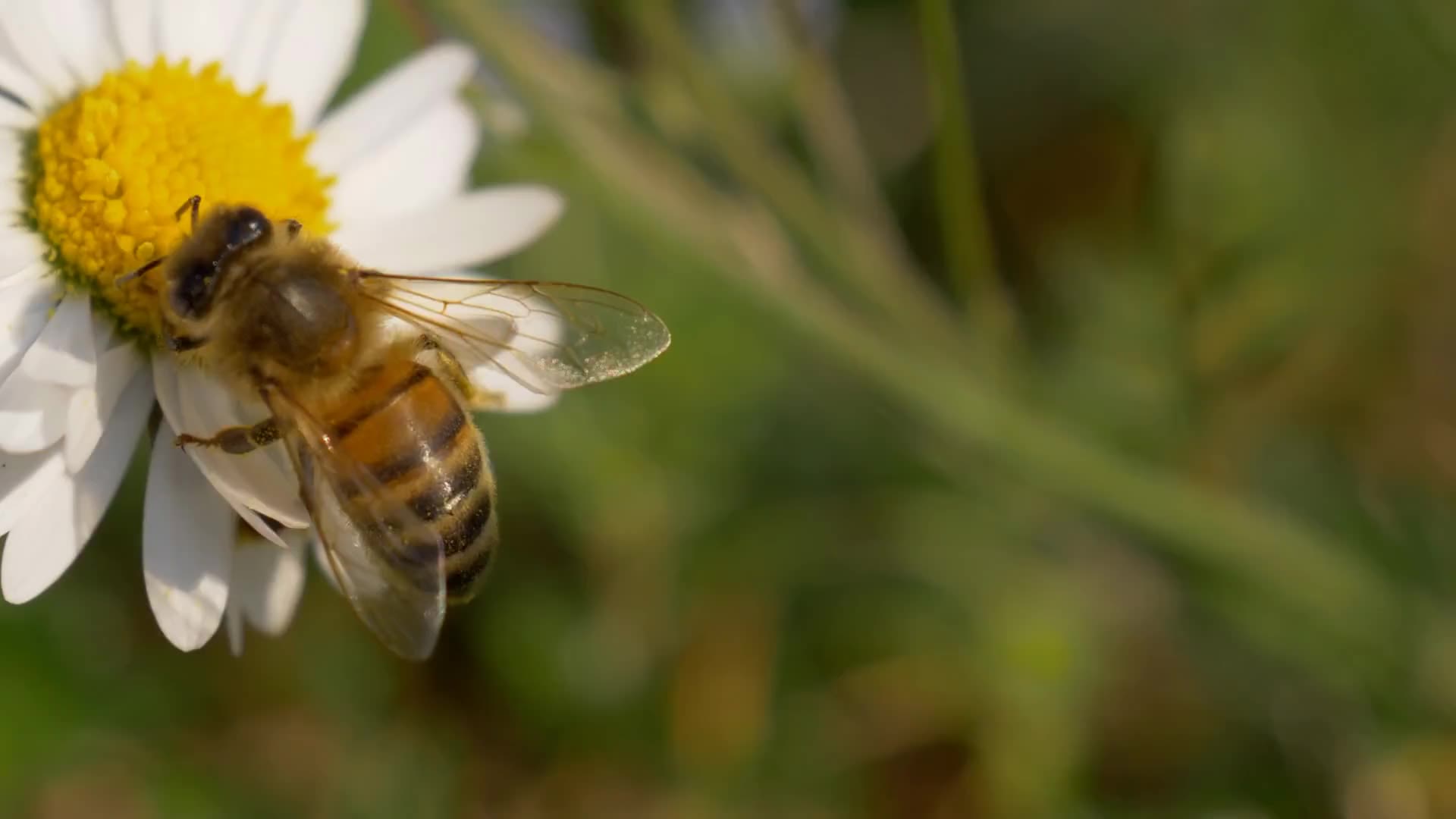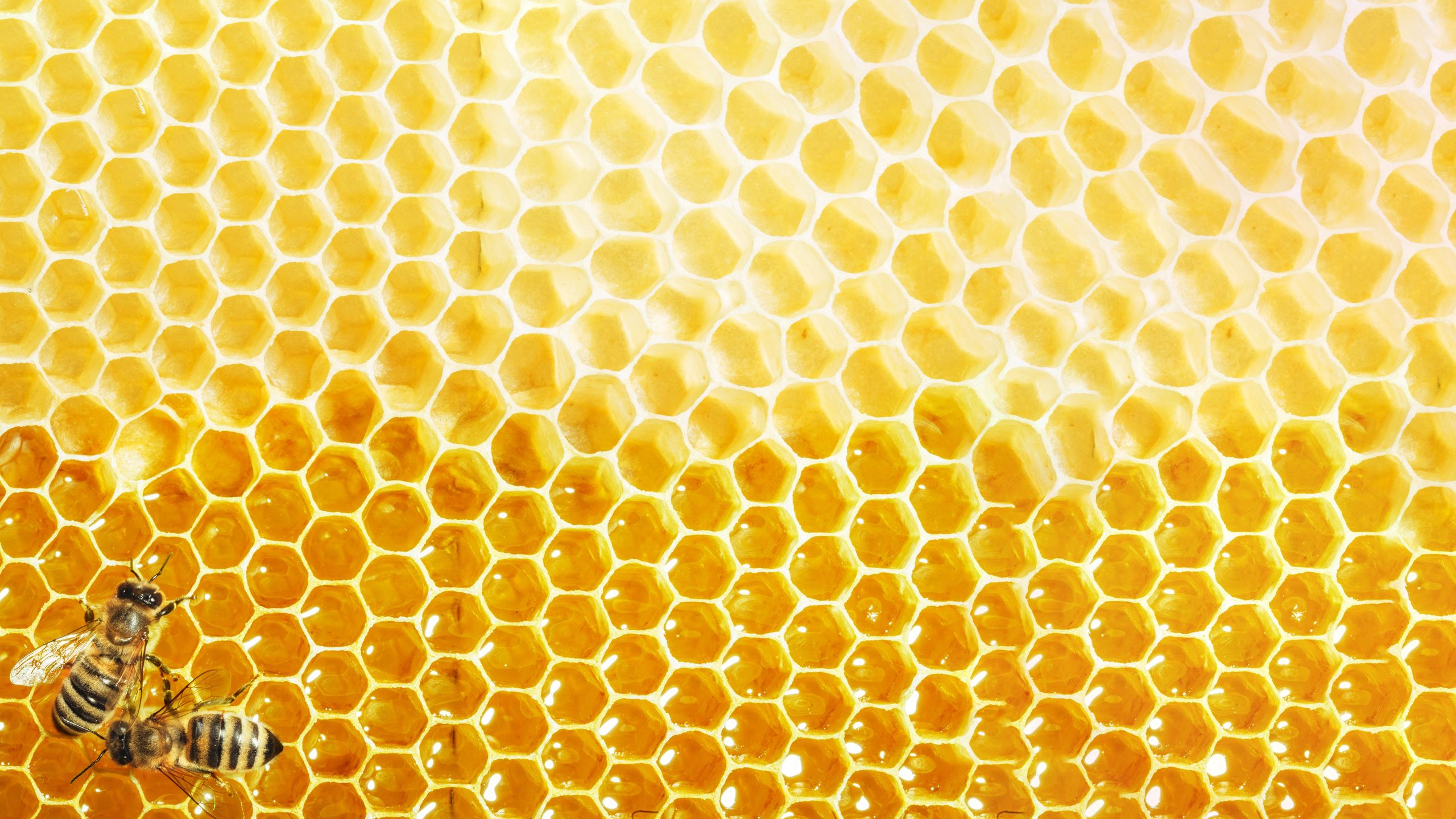Do you have the buzz on bees?
Take our quiz to find out!












Honeybees do more than make honey. They’re also important pollinators — along with native bees, moths, butterflies, bats, and birds. They deposit pollen on thousands of species of flowering plants, thus helping to produce some 130 fruits and vegetables, from almond trees to blueberry bushes to zucchini plants.

In honor of World Honeybee Day, August 19, take our quiz on pollinators. You won’t bee sorry you did! You will learn all the ways pollinators create a healthy environment and a strong economy. (And you can count our silly bee puns.)
Question #1 of 7
How many species of bees are there globally?
Scientists have found 20,000 bee species on every continent, except for Antarctica. In North America alone, there are 4,000 native bee species. The honeybee was imported in the 17th century from Europe and Asia.
In a honeybee hive, there are three types of bees: worker bees, drones, and the queen. The worker bees are females with stingers they use to protect the hive. The drones are males without stingers. Their sole purpose is to mate with the queen. There is only one queen bee in a colony of 50,000 bees. She is the largest bee, and her wings don’t reach her abdomen. Beauty is in the eye of the bee-holders (the drones, in this case).

Question #2 of 7
How many flowers can a honeybee colony pollinate in one day?
A single honeybee pollinates about 5,000 flowers per day. And if every worker bee in a colony is pollinating, they’re visiting 250–300 million flowers in a day.
Here’s how they get it done: A single worker bee travels to a flower to collect both pollen and nectar, using its hairy legs to pick up pollen before combing it into baskets on its hind legs. This worker will visit 50–350 flowers before depositing the pollen in a wax honeycomb back at the hive. Then, the worker embarks again. It makes 50 such trips per day, staying very buzzy.

Question #3 of 7
What percentage of the food you eat comes from a pollinator?
One out of every three bites we eat is thanks to a pollinator. Another way of thinking about this is: one-third of the world’s food supply relies on pollinators.
To pollinate, honeybees carry pollen from the male part of a flower to the female part. This cross-fertilization happens as they search for nectar and collect pollen on their bodies. And it allows a plant to reproduce, making seeds that turn into fruits, vegetables, or other crops. If plants are not pollinated, they age and die without forming any seeds.
Each year, crops pollinated by bees bring over $577 billion to the global economy. This is big bees-ness. In the United States, honeybees bring in several billion dollars in agricultural production annually. Some estimates suggest that honeybees represent 80% of the insects that pollinate agricultural crops in the United States.

Question #4 of 7
How many miles does a honeybee colony fly to make one pound of honey?
It takes eight bees their entire lifetime to make 1 teaspoon of honey. But because of its numbers, the average hive makes 60 pounds of honey in a good season.
Honeybees deposit the liquid nectar they take from flowering, sweet plants in wax combs in the hive. Worker bees inside the hive fan the combs constantly, letting the liquid slowly evaporate and condense into honey before sealing it with a wax layer over the comb. After that, humans can harvest the honeycomb.
Pure honey never expires and can last for millennia. There were unspoiled jars of honey discovered in King Tut’s tomb that had been there for over 3,000 years. Un-bee-lieveable!

Question #5 of 7
Honeybees can sting multiple times, and are known to be aggressive.
Honeybees are different from both wasps and bumblebees, both of which can sting multiple times. Honeybees, on the other hand, are very chill! They can only sting once and do so only to defend the hive. Only the female bees can sting, and once they do, they die. And they don’t become zom-bees.

Question #6 of 7
Since 2006, what share of honeybees is lost from commercial beekeepers’ colonies per year?
Each year at the end of the season, as they count their hives’ numbers, beekeepers detect more than a veiled threat. The average recent annual losses of 30% compare to historical levels of 10–15% loss.
Scientists, searching for reasons behind the declines, point to urbanization and agricultural reliance on insecticides or herbicides as partially responsible, but they’re still looking for a complete picture.
Many countries are adding certain species of native bees (which as a whole declined by 25% since 2006) to endangered species lists.

Question #7 of 7
Good ways to help preserve honeybee populations are to plant local, native pollinator-friendly plants and to reduce pesticide usage.
Okay, that question was a free-bee. Scientists recommend planting native, flowering plants — in apartment building window planters, on suburban lawns or throughout farmland — and curbing pesticide use. Such steps help all pollinators, from honeybees to beetles, flies, moths, butterflies, birds and bats.

Thank you for taking our quiz.
The U.S. Department of State has many offices that develop environmental initiatives. Learn more by visiting the Bureau of Oceans and International Environmental and Scientific Affairs online or the Special Presidential Envoy for Climate John Kerry online or on social media.
Oh, and, how many bee puns did you spot? We think there are eight, but we can't bee sure.
